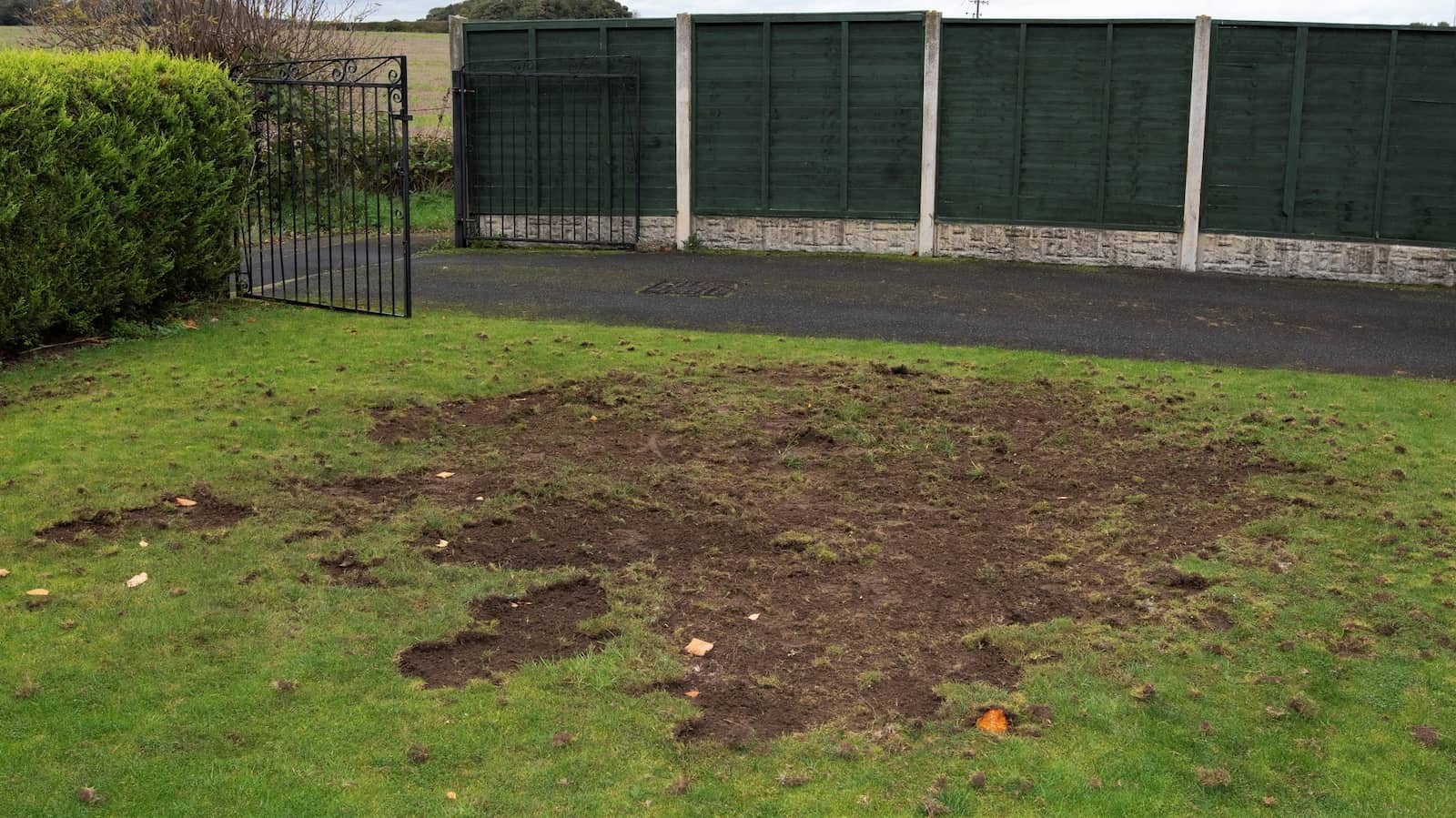When undergoing lawn care for your yard, the best way to determine if your lawn is suffering from grub damage or lawn fungus is by reaching down and grabbing a handful of grass.
When you lift up the grass, grub-damaged clumps will pull straight out with no resistance because the lawn grubs ate the roots.
If the grass provides resistance or stays in place, then the roots are probably still intact, indicating your problem is due to a fungus or a similar type of lawn disease.
Here, we’ll go over other distinctions so you know whether you need to be concerned about grubs or fungal diseases.
Grub Damage vs. Fungus
The damage done by grubs and fungus can look very similar, making it difficult to decide which problem to treat.
Once you notice there is weak, dying, or dead grass in your yard, it’s imperative you locate the problem and fix it immediately before it gets worse.
Signs You Are Dealing With Grubs
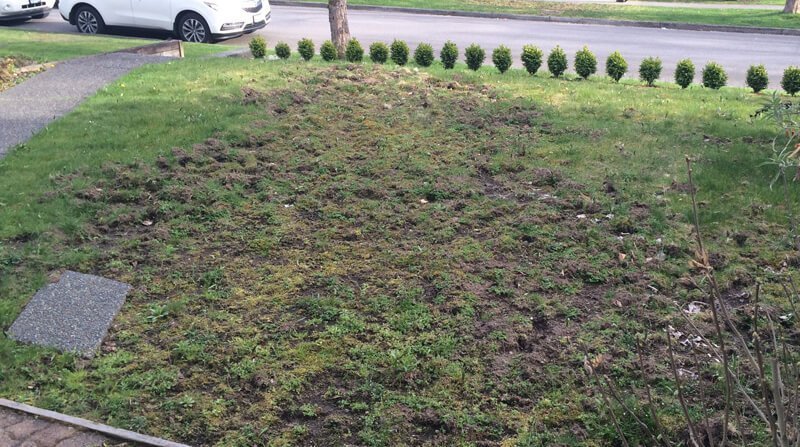
When your yard has a grub problem, you will begin to notice brown spots of dead grass in your otherwise green and healthy lawn. Grubs go straight for the roots, killing the grass quickly and creating a brown patch as they munch away.
Grubs prefer sunny spots and warm soil. If you step on the grub-damaged grass, the surface of the ground will have a spring-like reaction, or feel spongy and soft.
Lastly, grubs are a delicious snack for tons of backyard critters such as raccoons, skunks, and birds. If you find you have an overabundance of these animals, you might have a grub infestation.
So, what is a grub?
A grub is a baby beetle. These pests are the larva stage of the insect and are easily identified by their white, worm-like bodies. For grubs to grow, they have to eat, and their meal of choice is grass.
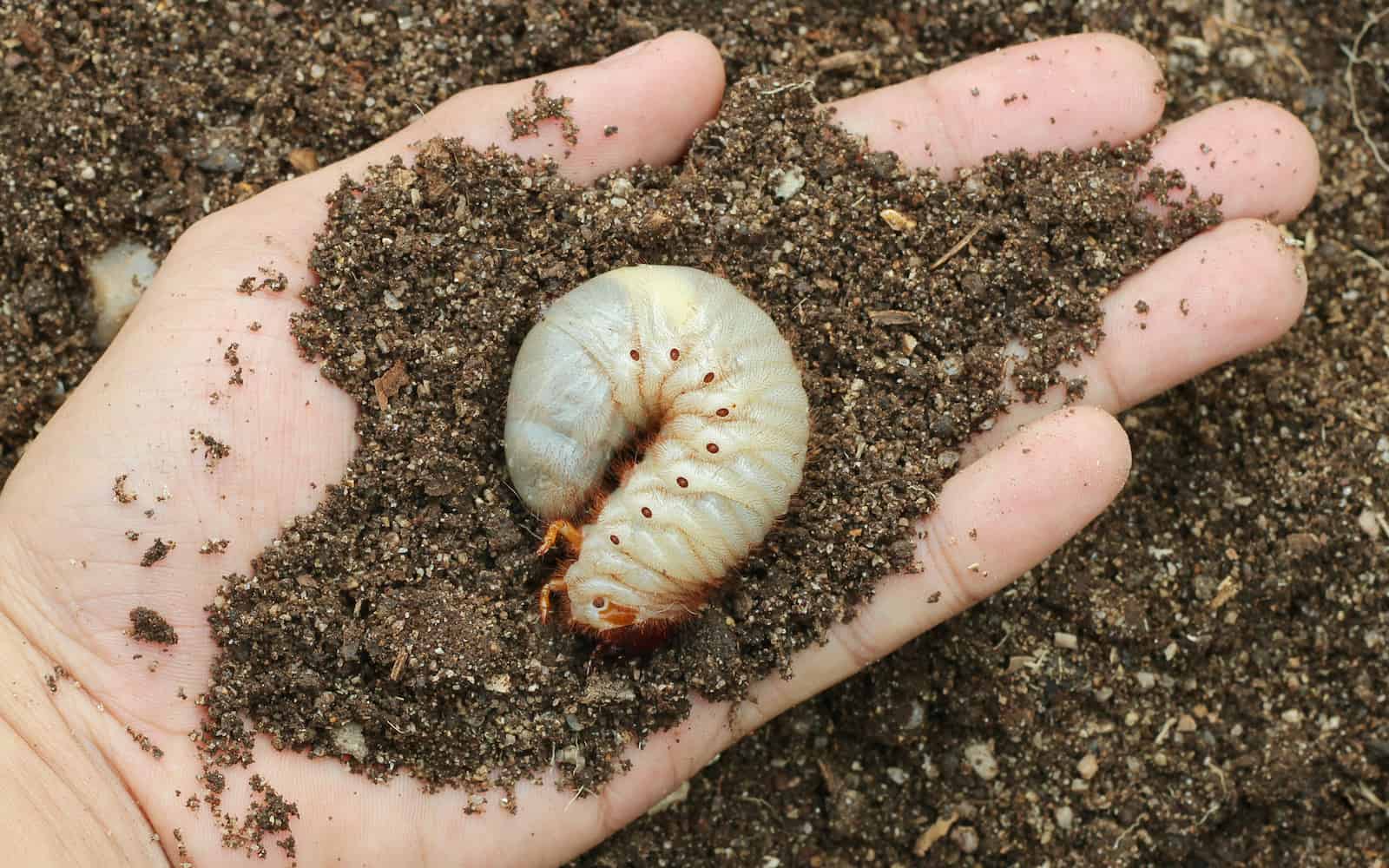
How do you know if you have grubs in your lawn?
- There are dark or brown patches of grass forming in your lawn
- There is an increase in animal activity outside
- The ground beneath the brown spots is spongy and springy
- You can lift the grass up from the ground with ease
- The dead grass is in a warm, sunny spot
Signs You are Dealing With Fungus
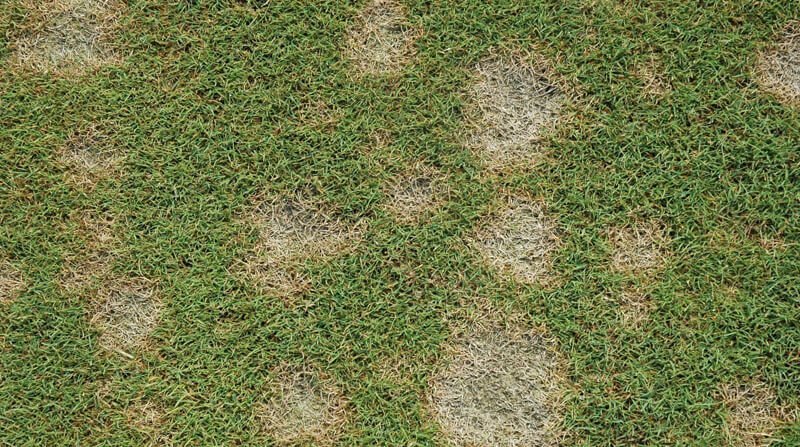
Fungus, on the other hand, is going to give a little tension or resistance when you try to pull the grass away from the soil.
Because the fungus is a micro-organism like mushrooms and mold, it grows on the plant, killing it by making it ill, not cutting through the roots.
Loose patches of grass aren’t the only sign you are dealing with a fungal problem in your yard. You will also notice that areas of grass are starting to thin out, or the grass blades themselves are beginning to lose their vibrant green coloring.
Since fungus thrives in moist locations, you will also notice the infected space will look slimy, greasy, and wet.
When fungus invades grass roots, you may start to notice red, orange, purple, grey, or black spots growing on the roots and stems. You will also find a powdery, stringy substance on the ground around the infected area.
How you know if you have fungus on your lawn
- There’s a white, grey, or black stringy, powdery substance in the area
- You find red, orange, purple, black, or grey spots on the roots and stem
- Infected areas look slimy, greasy, and wet
- There is resistance when tugging on a patch of grass
- Grass blades are losing color and starting to yellow
Understand What Causes Fungus and Grubs
We feel the best way to get a good idea of what is causing your lawn struggles is by thoroughly understanding what conditions can cause them in the first place.
Most Common Causes of Fungal Disease in Lawns
There are a few common issues homeowners may not be aware of that can actually cause fungal spots. A few of them include:
- Droughts
- Overwatering
- Using the wrong type of fertilizer
- Using too much fertilizer
- Weather conditions like temperature and humidity
- Overly compacted soil
- Improper mowing
Most Common Reasons for Grubs
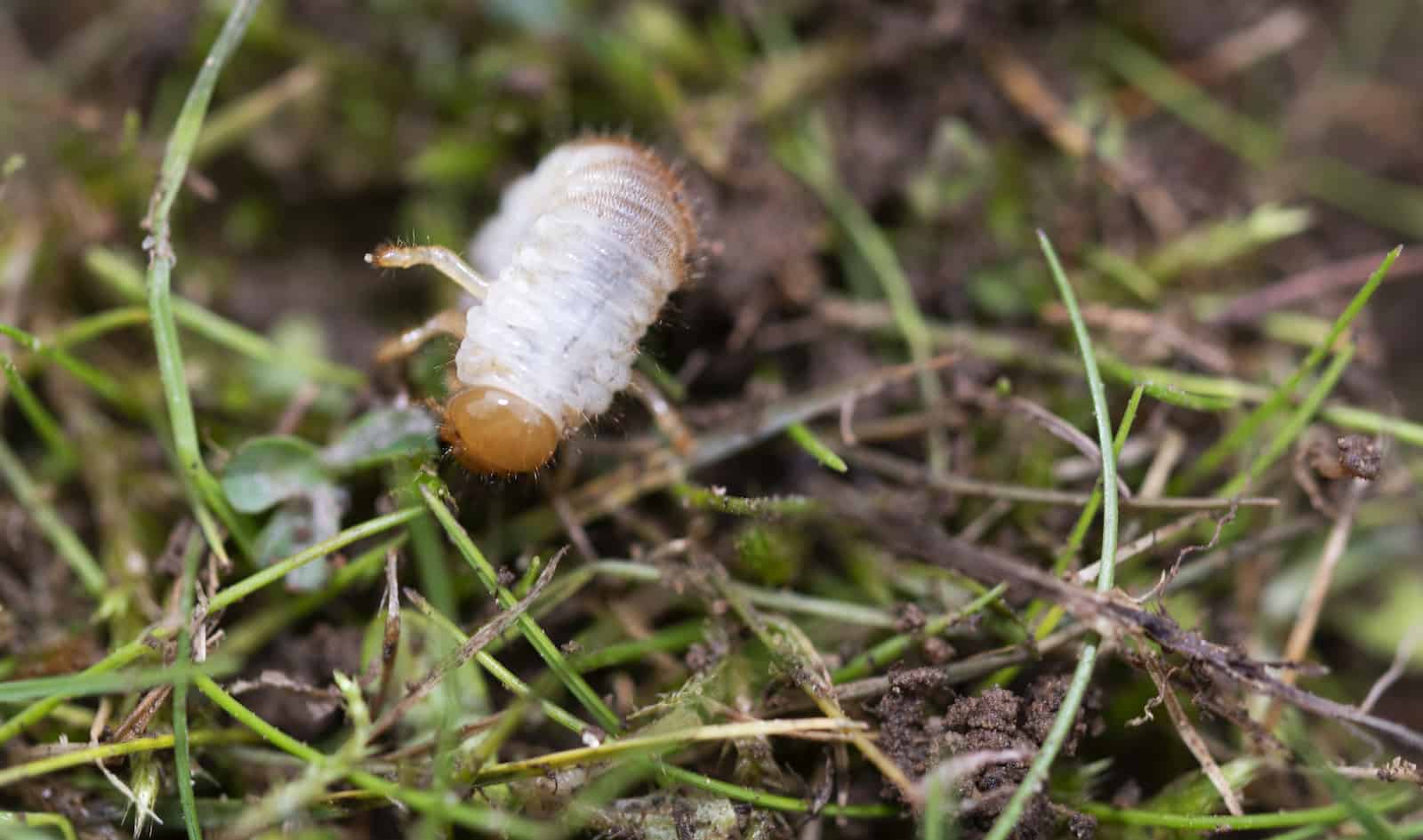
As we have mentioned above, grubs are beetle larvae. Beetles lay their eggs in early summer, in the wet, rainy season. Eggs are laid a few inches under the moist grass where they will thrive.
Grubs are also attracted to any soil that doesn’t have nematodes, which are worms that will hunt down and eat grubs, keeping them at bay. Nematodes are often killed if you overfertilize your lawn or use artificial fertilizers.
Summing Things Up
While there is a big difference between fungus damage and grub destruction, no one wants to deal with either.
In order to properly treat your lawn and find a beneficial solution, you first have to identify the root of your problem.
